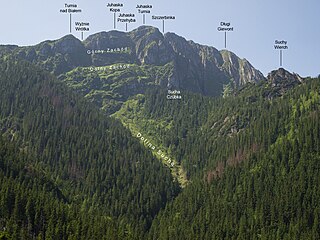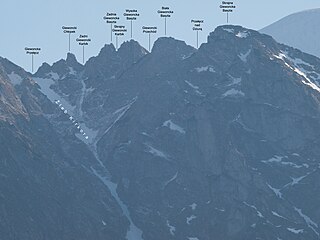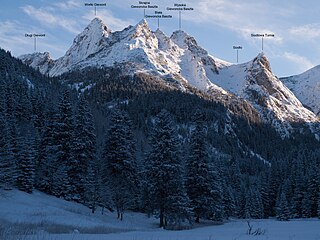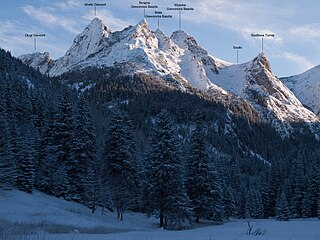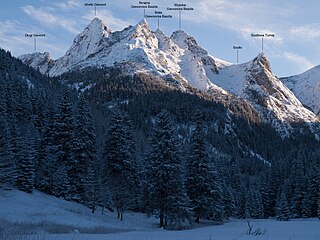Self-guided Sightseeing Tour #2 in Zakopane, Poland
Legend
Tour Facts
1.9 km
358 m
Experience Zakopane in Poland in a whole new way with our free self-guided sightseeing tour. This site not only offers you practical information and insider tips, but also a rich variety of activities and sights you shouldn't miss. Whether you love art and culture, want to explore historical sites or simply want to experience the vibrant atmosphere of a lively city - you'll find everything you need for your personal adventure here.
Activities in ZakopaneIndividual Sights in ZakopaneSight 1: Kondracka Kopka
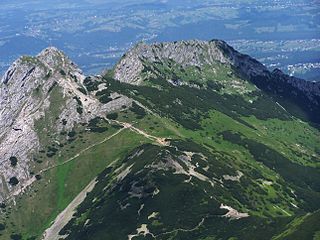
Kondracka Kopka – a mound in the northern ridge of Kopa Kondracka, located between the Kondracka Pass and the Wyżnia Kondracka Pass, above which it rises only a few meters. It is mostly overgrown with dwarf pine, grassy and scree in places. Its eastern slopes descend to Hell in the Kondratowa Valley, the western slopes to Wyżni in the Mała Łąki Valley. A short perch descends to the latter valley from Kondracka Kopka, separating two gullies descending from the slopes below the Kondracka Pass and Wyżnia Kondracka. These gullies below the perch connect with each other, creating the Głazisty Żleb. The opposite slopes between Kondracka Kopka and Giewont are cut into the Kurski Żleb.
Sight 2: Długi Giewont
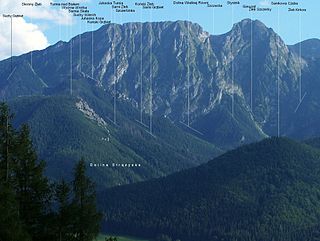
Long Giewont – a long ridge of the Giewont massif in the Western Tatras. It is separated from the main peak called the Great Giewont by the Szczerba Pass.
Sight 3: Juhaska Turnia
Juhaska Turnia – a crag in the ridge of Długi Giewont in the Polish Western Tatras, located between Juhaska Przehyba and Szczerbinka. On the southern side, a several-dozen-meter-high wall descends to the Great Upłaz in the Kondratowa Valley, while in the northern direction the outstanding Juhaski Filar descends from it to the Banie couloir in the Strążyska Valley.
Sight 4: Krzyż na Giewoncie
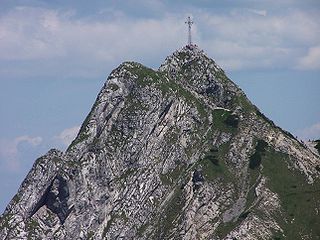
The Cross on Giewont – a metal cross on the top of the Great Giewont in the Giewont massif.
Sight 5: Wielki Giewont
The Great Giewont – rising to an altitude of 1895 m above sea level, the main peak of the Giewont massif in the Western Tatras.
Sight 6: Giewoncki Chłopek
Giewoncki Chłopek – crag in Mały Giewont in the Western Tatras. It is located between the Giewoncka Pass and the Zadni Giewoncka Baszta. In the ridge between the Giewoncka Pass and Giewoncki Chłopek there are several more small turnstiles, while it is separated from the Zadnia Giewoncka Tower by the Zadni Giewoncki Karbik. It descends to it with an almost vertical fault of about 10 m. The passage through this fault was rated as III on the UIAA (Tatra) scale of difficulty. Giewoncki Chłopek can be easily walked around from the south, while to the north side it descends to the Kirkor Gully with a wall.
Sight 7: Zadnia Giewoncka Baszta
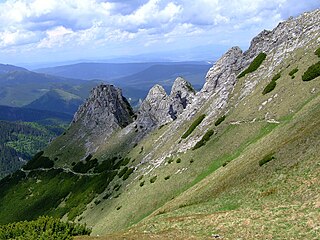
Zadnia Giewoncka Baszta – one of the crags in Mały Giewont in the Western Tatras. Like the entire massif of Mały Giewont, it is built of sedimentary rocks – limestone and dolomite. It is located between Zadni Giewoncki Karbik and Skrajny Giewoncki Karbik. The eastern walls descend to the Kirkor Gully, the south-western to the Mała Łąki Valley near the Siodło Pass.
Sight 8: Biała Giewoncka Baszta
Biała Giewoncka Baszta – one of the crags in Mały Giewont in the Western Tatras. Like the entire massif of Mały Giewont, it is built of sedimentary rocks – limestone and dolomite. It is located between the Pass over the Hole and the Giewoncki Pass. The north-eastern walls descend to the Kirkor Gully, the south-western to the Mała Łąki Valley; from this side, they are covered by two arms of the Gully with the Threshold approaching the passes on both sides of the crag.
Sight 9: Wysoka Giewoncka Baszta
High Giewoncka Baszta – one of the crags in Mały Giewont in the Western Tatras. Like the entire massif of Mały Giewont, it is built of sedimentary rocks – limestone and dolomite. It is located between the Extreme Giewoncki Karbik and the Giewoncki Pass. The eastern walls descend to the Kirkor Gully, while to the west to the Mała Łąka Valley there is a short ridge ending with the Saddle Crag. From the side of Saddle Turnia, this ridge is quite clear, rounded and grassy, above the Saddle it flattens out and grows into the walls of the Zadnia Giewoncka Tower in a hardly distinguishable place. In addition, one more rocky perch descends to the Valley of the Small Meadow from Wysoka Giewoncka Turnia, which separates two gullies. Looking from the bottom, on the left side of this perch there is the Gully with the Threshold, on the right the Gully of the Sleeping Knights.
Sight 10: Siodłowa Turnia
Saddle Crag – a crag rising in the upper part of the Mała Łąki Valley in the Western Tatras, south of Mały Giewont. It is separated from it by the Siodło Pass. It forms a short, narrow ridge, in which the peak stands out, rising to a height of 1647 m above sea level. It descends along a steep cliff about 150 m high to the Głazisty Żleb. Saddle Crag together with Mały Giewont and Wielka Turnia creates a panorama of peaks rising above Wielka Polana in the Valley of Mała Łąki.
Sight 11: Skrajna Giewoncka Baszta
Extreme Giewoncka Baszta – one of the crags in Mały Giewont in the Western Tatras. It is located at its northern end, between the Bacuch Pass and the Pass over the Hole. The western slopes descend to the Mała Łąki Valley, the northern slopes to the Warzecha Gully, the eastern to the Kirkor Gully. The height of Mały Giewont, given on many maps, most likely refers to this crag, because it seems to be the highest from Zakopane, and for Austrian cartographers it was also the most easily accessible.
Sight 12: Szara Turnia
Szara Turnia – one of the crags in Mały Giewont in the Western Tatras. It is the most prominent of all crags of Mały Giewont and is well visible from Zakopane, especially in the morning. It is located on the north-eastern ridge of the Extreme Giewoncka Baszta, separated from its top by the Grey Pass. It has two peaks, the southern one is slightly higher. From the shallow and grassy saddle between these peaks, the jam falls. It is steep and stretches along the entire length of the wall. The northern walls of Szara Turnia descend to Szary Żleb. In the upper part of the wall of the northern peak of Szara Turnia there is a partly grassy, partly slab west. Szara Turnia, like the entire massif of Mały Giewont, is built of sedimentary rocks – limestone and dolomite.
Share
Disclaimer Please be aware of your surroundings and do not enter private property. We are not liable for any damages that occur during the tours.
GPX-Download For navigation apps and GPS devices you can download the tour as a GPX file.
